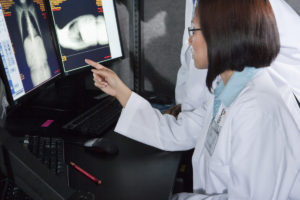Innovation In Structural Cardiology And Cardiac Surgery
Posted by Salvatore Tribastone on 13 June 2019
Innovation is something human beings constantly search in order to achieve greater results in life. Following this same idea, scientists, doctors, and other related individuals involved in the medical field are the pure example of innovation, creating always new techniques, methods, and procedures to treat medical conditions.
 Inside this field, the cardiology department has evolved very much over the past 50 years, moving outside classical boundaries to develop new ways to manage both congenital and acquired heart conditions, creating a new field called structural heart disease or structural cardiology.
Inside this field, the cardiology department has evolved very much over the past 50 years, moving outside classical boundaries to develop new ways to manage both congenital and acquired heart conditions, creating a new field called structural heart disease or structural cardiology.
This new subspecialty goes hand to hand with cardiac surgery, treating abnormal structural conditions especially involving valvular and congenital heart diseases, and developing a fervent interest in creating less invasive approaches with the goal of decreasing procedural risks, increasing clinical outcomes, and extending these procedures´ reach to more populations.
As stated above, valvular interventions are one of the main reasons for which structural cardiology is practiced. Taking advantage of some of the recent methods created, such as 3D bioprinting and MitraClip® procedures, this new field is opening new doors in cardiology and cardiac surgery.
Another important element that needs to be considered for the development of these procedures is the innovation in the medical imaging department, choosing always more ultrasound based-on techniques instead of radiation ones to guide the surgeons through the cardiovascular system. In recent years, a system known as EchoNavigator® has been put to the test in the repair of cardiac structural abnormalities, increasing the procedures´ positive results.
Behind all this, the Heart Team plays a major role, forming a group of experts in several healthcare fields and determining the best treatment plans for each patient, basing their decisions in valid scientific studies and researches.
Is important to signal that most parts of the success of structural cardiology interventions depend mostly on the operators´ field experience, knowledge of cardiovascular anatomy and physiology, implementation of recent imaging technologies, acquisition of novel procedural abilities, and proper training.
© ALL RIGHTS RESERVED




